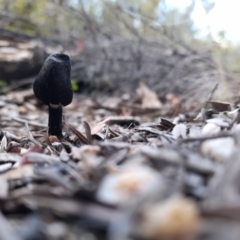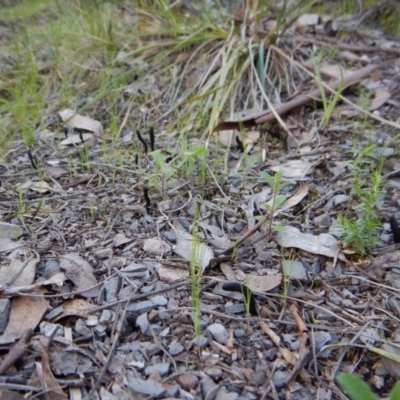Geoglossum (Earth tongue)
The fruit bodies of Geoglossum are black stalks that grow on soil (occasionally on rotten wood). The stalks have a fleshy to rubbery consistency and are broader in the upper part. The broadening may be gradual or sudden, may be long or short in relation to the whole fruit body length and may be only a little wider than the lower part of the fruit body or considerably wider. Identification to species relies on microscopic features.
Look-alikes
The fruit bodies of Trichoglossum and Thuemenidium resemble those of Geoglossum. Those of Geoglossum are smooth whereas those of Trichoglossum have an abundance of short, dark bristles and in this photo (http://www.cpbr.gov.au/fungi/images-captions/trichoglossum-walteri-0225.html) you see the bristly surface of a Trichoglossum fruit body. Thuemenidium fruit bodies are smooth but differ from Geoglossum in that the mature spores are colourless whereas those of Geoglossum are black. Thus far a single species, Thuemenidium berteroi, has been recorded from Australia, growing on dead wood in Tasmania.
The fruit bodies of some species of Xylaria are black stalks, but they grow on wood (sometimes from roots), are more brittle and have white interiors (whereas the other genera listed above have fruit bodies with dark interiors).
Geoglossum is listed in the following regions:
Canberra & Southern Tablelands | South Coast | Central West NSW
Species information
- Geoglossum Scientific name
- Earth tongue Common name
- Not Sensitive
- Local native
- Non-invasive or negligible
- Up to 986.7m Recorded at altitude
- Machine learning


























